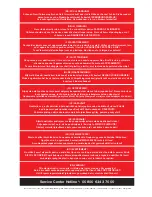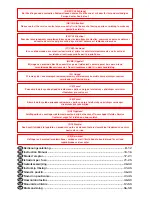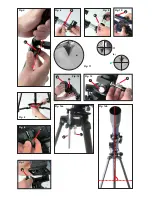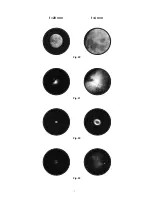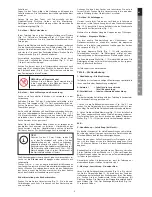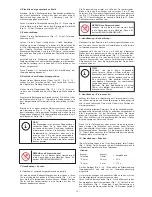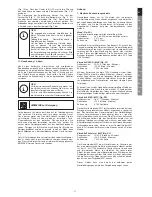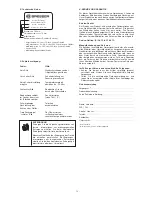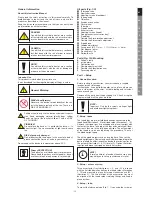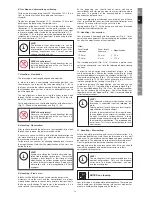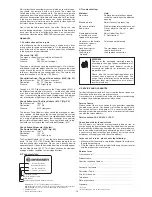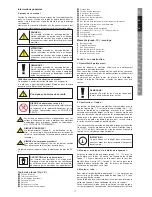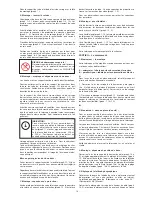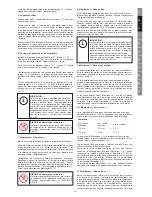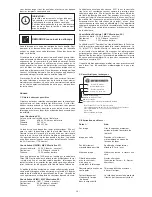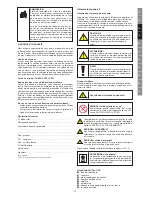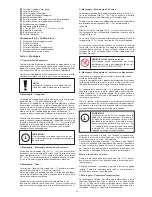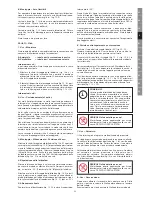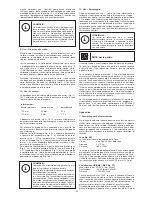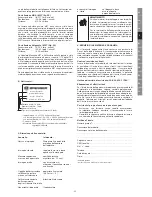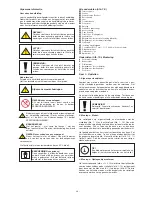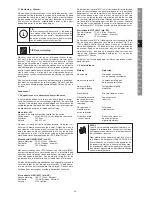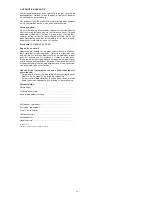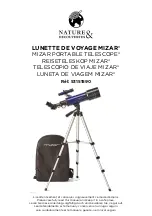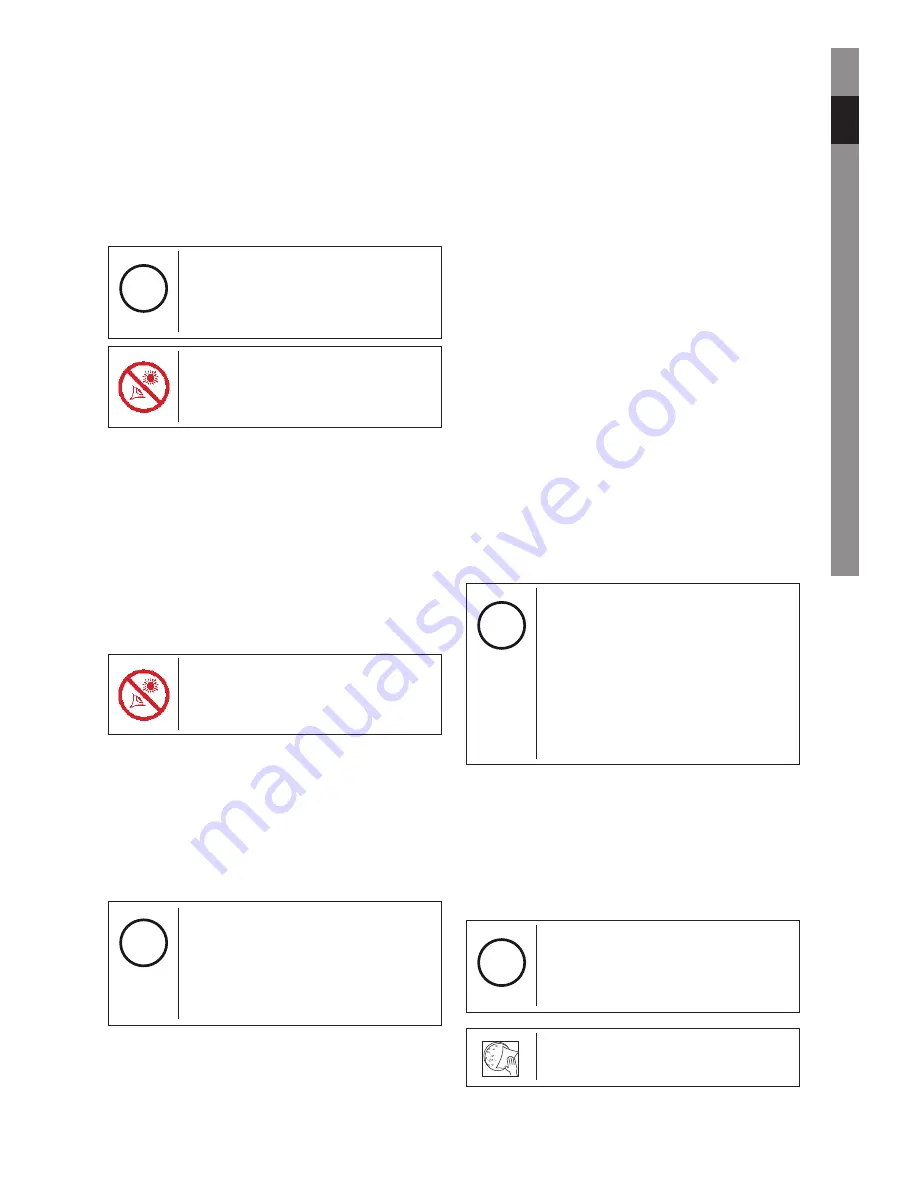
- 15 -
6. Tracking and observation positioning
Tilt the main telescope (main tube) 90° (illustration 15 C). Turn it
180° to the right or left until the objective lens shows
skywards.
Tighten all clamping (illustration 13 Y + illustration 15 A) so that
tracking can be done using the flexible shaft.
Manual use of the hours axis (R.A. axis) via the flexible shaft
(illustration 15 D) compensates for the earth‘s rotation so that
objects remain always in the eyepiece visual field. If you want
to move to another object undo the clamping (illustration 13 Y
+ illustration 15 A), rotate the main tube appropriately and then
re-tighten the clamping. Fine adjustment is done using the flex-
ible shaft (illustration 1 14+15).
HINT!
The latitude of your observation site can be
found in maps or in the internet. A good source
of information is www.heavens-above.com. After
checking “anonymous user” > “select” you may
choose your land and city.
i
RISK of bodily injury!
Never use this device to look directly at the sun
or in the direct proximity of the sun. There is a
RISK OF BLINDNESS!
7. Handling – Viewfinder:
The telescope is now roughly aligned and adjusted.
In order to obtain a comfortable observation position, you
should loosen the screws at the tube mounting (Fig. 1, 8), so
that you can rotate the telescope tube. Bring the eyepiece and
the viewfinder into a position in which is comfortable for you to
look through both.
The fine alignment is done by using the finder scope. Look
through the finder scope and centre Polaris (Fig. 16) in the mid-
dle of the finder scope (Fig. 17).
For fine adjustments use the flexible handles of the horary axis
(Fig. 15, D) and of the declination axis (Fig. 15, E).
RISK of bodily injury!
Never use this device to look directly at the sun
or in the direct proximity of the sun. There is a
RISK OF BLINDNESS!
8. Handling - Observation:
After you have located the pole star in the viewfinder, if you look
through the eyepiece, the pole star will be visible.
If necessary, you can with help of the flexible handles align the
star more exactly, just as you can adjust the definition by using
the focussing wheel (Fig. 15, F).
Furthermore, you can now, by changing the eyepiece, increase
the magnification. Note that the magnification of the stars can
hardly be seen.
HINT!
Eyepieces enlarge the (not directly visible) pic-
ture of the telescope’s prime focus. The less the
eyepiece’s focal lengths is, the stronger is the
magnification. So various eyepieces are needed
to reach different magnifications. Begin every
observation with a low magnification (20mm
eyepiece).
i
9. Handling – Find a star:
Initially it will be difficult for you to find your bearings in the
firmament, since the stars and the constellations are always
moving and according to season, date and time their position in
the heavens will change. The pole star is the exception. It is a
fixed star and the starting point for all star maps.
At the beginning, you should look at some well known
constellations and star groups order that are visible the whole
year over. The position of the heavenly bodies is however
dependent on date and time.
If you have aligned your telescope accurately on one of these
stars, you will find that it has vanished your visual field after a few
minutes. To even out this effect, you must turn the
flexible handle (Fig. 15, D) the horary axis and your telescope
will follow the trajectory of this star.
10. Handling – Accessories:
Your telescope is equipped with two eyepieces (Fig. 2, 18) as
part of the basic equipment. By interchanging the eye pieces you
can alter the magnification of your telescope.
Hint:
Focal length
telescope
: Focal length
Eyepiece
= Magnification
700 mm
: 20 mm
= 35 x
700 mm
: 4 mm
= 175 x
The star diagonal prism (Fig. 2+18, 19) causes a picture rever-
sal (mirror wrong) and is put into the telescope before viewing
the earth.
In order to see an upright and sidecorrect picture, you may
use the erecting lens. Loosen the locking screw (Fig. 8, X) and
remove the diagonal mirror from the eyepiece holder (Fig. 1, 6).
Now put the erecting lens (Fig. 2, 20) in place and retighten the
locking screw (Fig. 19). At last, put an eyepiece (e.g. f=20mm)
in place and tighten the locking screw (Fig. 9, X).
In order to increase the magnification, you can also use the
Barlow lens (Fig. 2, 21) instead of the inverted eyepiece (Fig. 2,
20), as described above (Fig. 19b). Thus, the normal magnifica-
tion can be increased by three times. Use of the Barlow lens
together with the star diagonal (Fig. 18b) is recommended for
terrestrial observations.
HINT!
The indicated maximum magnification for this
telescope is calculated from the following for-
mula:
Telescope focal length: Eyepiece focal length x
magnification of the attachment
In order to detect objects at this magnification,
the conditions of the natural surroundings must
be right. Since this is seldom the case, a sharp
enough image cannot normally be achieved with
the maximum magnification. The image appears
out of focus. This is not a defect but due to tech-
nical reasons.
i
11. Handling – Dismantling:
After a hopefully interesting and successful observation, it is
recommended that you store the entire telescope in a dry, well
aired area. On some telescopes the tripod and mount can easily
be separated. The adjustments to the mount will remain intact.
Don‘t forget to put the dust-protection-caps onto the tube
opening and onto the eyepiece connection. Also, you should
stow all the eyepieces and optical accessories into their
corresponding receptacles.
HINT!
The erecting lens is not recommended for astro-
nomical observations. Only use the diagonal
mirror here. To observe landscapes, you may
use the erecting lens.
i
NOTES on cleaning
Your telescope is a high-quality optical appliance. Therefore you
should avoid your telescope coming into contact with dust or
moisture. Avoid putting fingerprints on the lens.
DE
GB
FR
IT
NL
PL
CZ
SK
HU
RO
SE
Summary of Contents for Skylux 70
Page 4: ...Fig 3 Fig 1 Fig 2 2...
Page 7: ...7 f 20 mm f 4 mm Fig 20 Fig 21 Fig 22 Fig 23...
Page 60: ...60...
Page 61: ...61...
Page 62: ...62...
Page 63: ...63...


